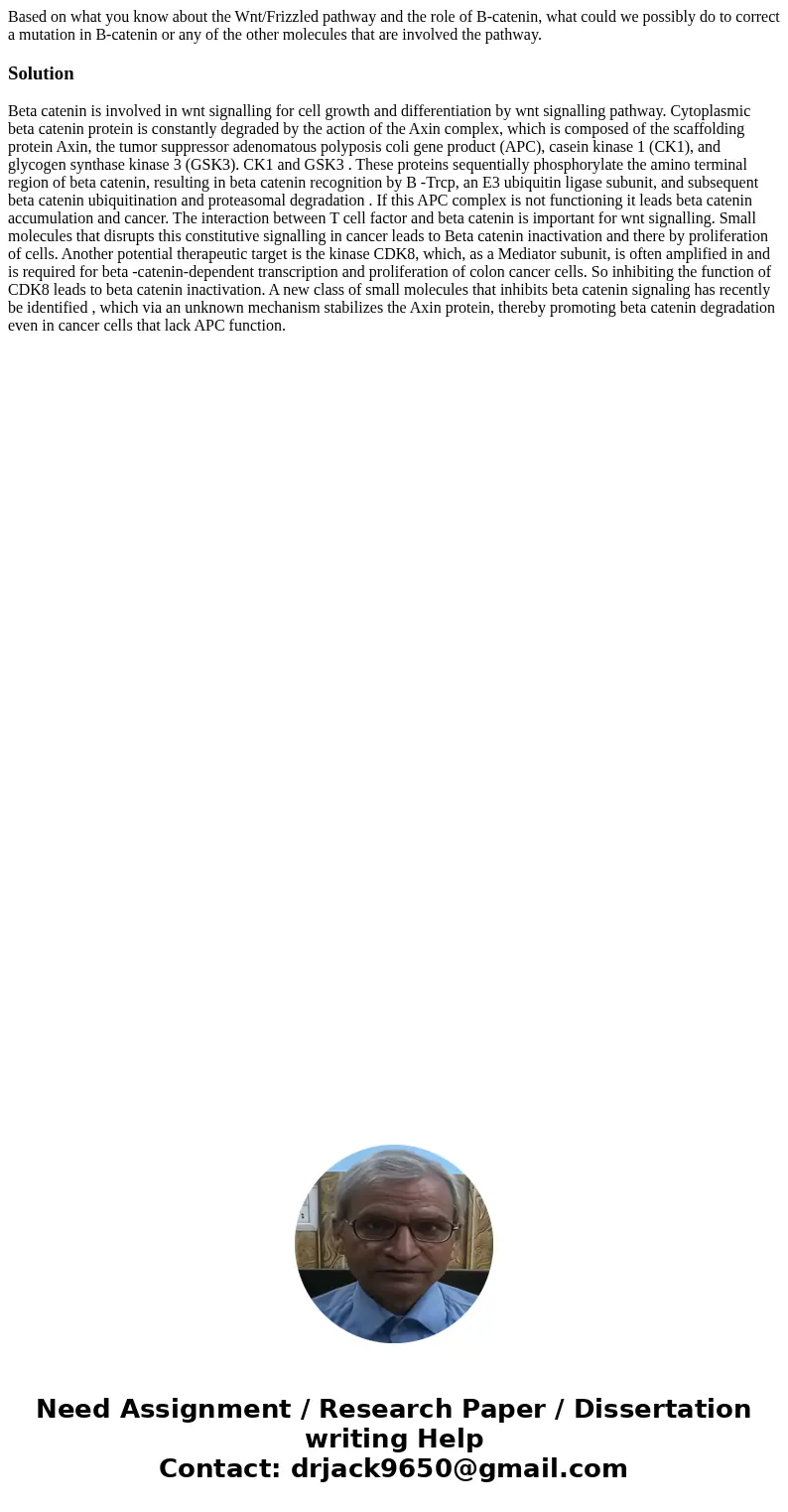Based on what you know about the WntFrizzled pathway and the
Based on what you know about the Wnt/Frizzled pathway and the role of B-catenin, what could we possibly do to correct a mutation in B-catenin or any of the other molecules that are involved the pathway.
Solution
Beta catenin is involved in wnt signalling for cell growth and differentiation by wnt signalling pathway. Cytoplasmic beta catenin protein is constantly degraded by the action of the Axin complex, which is composed of the scaffolding protein Axin, the tumor suppressor adenomatous polyposis coli gene product (APC), casein kinase 1 (CK1), and glycogen synthase kinase 3 (GSK3). CK1 and GSK3 . These proteins sequentially phosphorylate the amino terminal region of beta catenin, resulting in beta catenin recognition by B -Trcp, an E3 ubiquitin ligase subunit, and subsequent beta catenin ubiquitination and proteasomal degradation . If this APC complex is not functioning it leads beta catenin accumulation and cancer. The interaction between T cell factor and beta catenin is important for wnt signalling. Small molecules that disrupts this constitutive signalling in cancer leads to Beta catenin inactivation and there by proliferation of cells. Another potential therapeutic target is the kinase CDK8, which, as a Mediator subunit, is often amplified in and is required for beta -catenin-dependent transcription and proliferation of colon cancer cells. So inhibiting the function of CDK8 leads to beta catenin inactivation. A new class of small molecules that inhibits beta catenin signaling has recently be identified , which via an unknown mechanism stabilizes the Axin protein, thereby promoting beta catenin degradation even in cancer cells that lack APC function.
 Homework Sourse
Homework Sourse